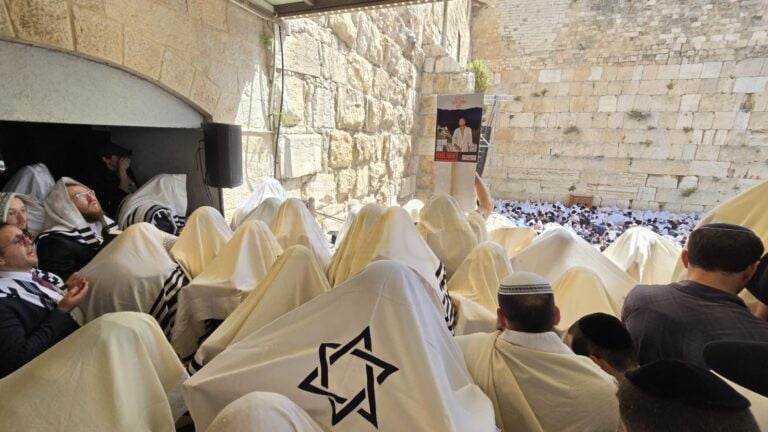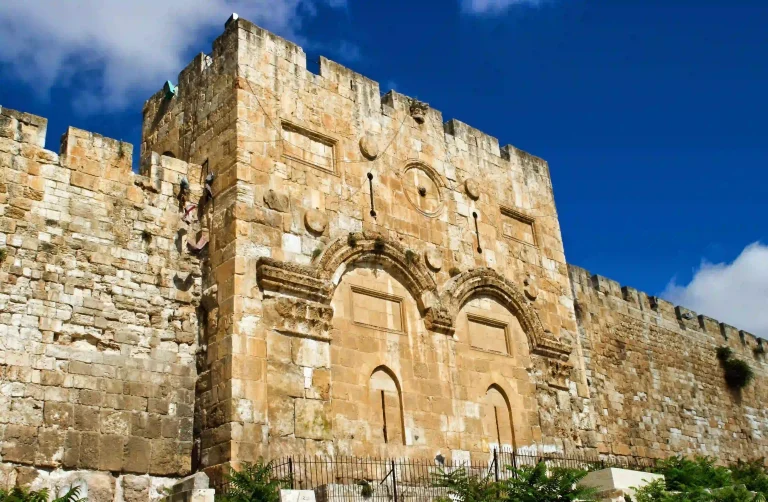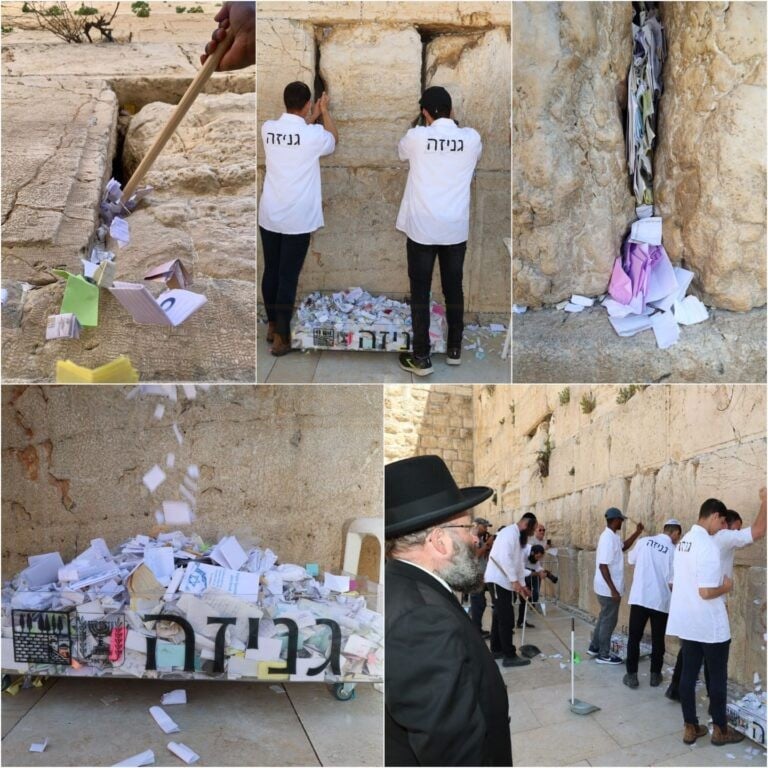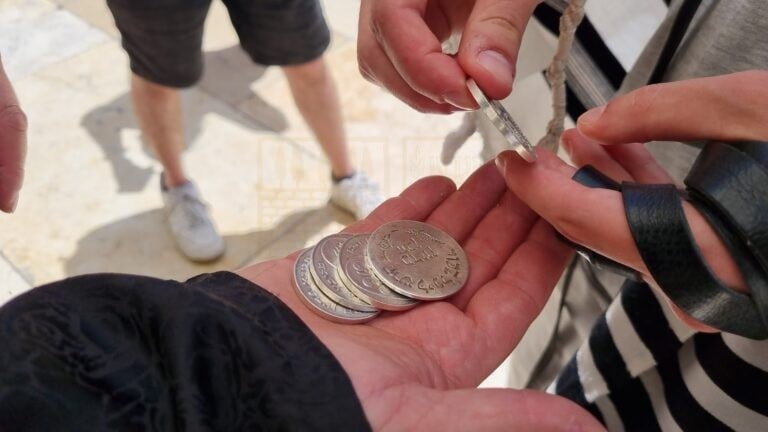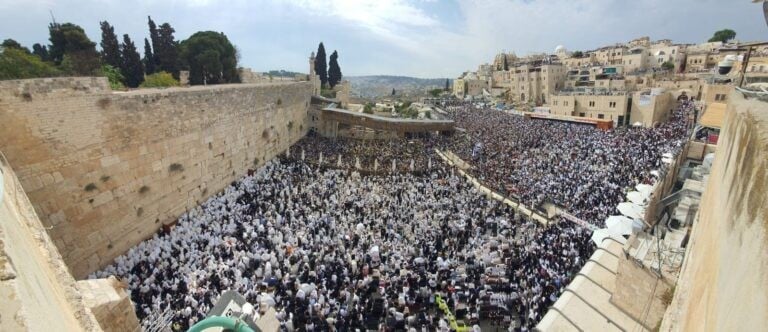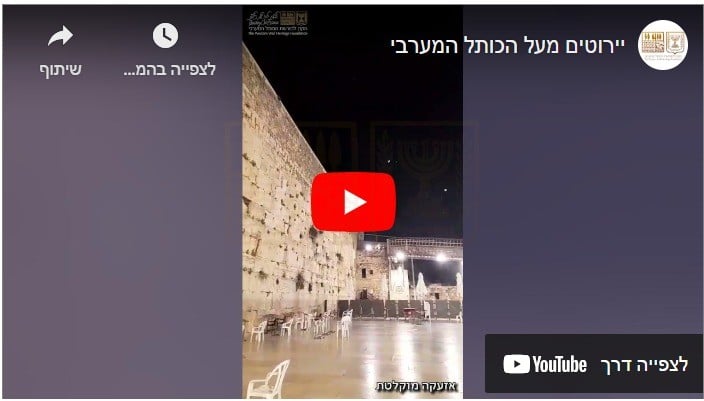Parashat Vayikra 5783
Rabbi Shmuel Rabinowitz, Rabbi of the Western Wall and Holy Sites
The book of Vayikra, Leviticus, which we begin to read this Shabbat, focuses on the world of the sacred: the Temple, the kohanim (priests) and the sacrifices. The book’s first two parashot detail the Jewish laws pertaining to the various sacrifices – something the modern reader finds so alien. But an in-depth examination reveals that the sacrifices in ancient times represented human and emotional issues that are relevant in every period and in every culture, gaining different expression throughout the generations and in various cultures.
Let us look at the “olah” sacrifice, for example. This sacrifice is not eaten, not by the kohanim nor by the person who brings the sacrifice. It is offered in its entirety on the altar. This offering represents man’s desire to be completely devoted to the sacred, to G-d; a desire that still exists and is expressed in various ways even now when offering sacrifices is such a distant concept.
In Parashat Vayikra, we learn about a long list of sacrifices: olah, shelamim, chatat, asham, and mincha. The mincha (meal) offering is different from all the others; it comes from plants and not from living things. It is actually a pretty unimpressive sacrifice. The person comes to the Temple with a small amount of flour, the kohanim add oil and a spice called “levona” (frankincense) and a tiny amount of it is offered on the altar and the rest of it is eaten. Who brings such a meager sacrifice to the Temple? Probably a person who does not have the financial ability to invest more and bring an impressive offering of an animal. The mincha is therefore the sacrifice of the poor. This sacrifice is usually brought voluntarily. There is no obligation to bring it – other than under rare circumstances – and the person brings it to the Temple of his own will.
Our sages discerned that the Torah used different language when referring to the mincha sacrifice, in comparison with the other voluntary sacrifices – the olah and the shelamim. The description of the olah sacrifice begins with the words, “When a man from [among] you brings a sacrifice to the Lord.” The commandment regarding the shelamim sacrifice does not refer to the person bringing the sacrifice, and starts with the words, “If his sacrifice is a peace offering”; whereas the mincha sacrifice is described as follows: “And if an individual (nefesh) brings a meal offering to the Lord.” What is the meaning behind the word “nefesh” (soul) in relation to the mincha sacrifice? Rabbi Yitzchak, a Babylonian sage from the 2nd century, inferred from this a message for generations:
Rabbi Yitzḥak says: For what reason is the meal offering different from other offerings in that the term “an individual [nefesh]” is stated with regard to it? The Holy One, Blessed be He, said: Whose practice is it to bring a meal offering? It is that of a poor individual; and I will ascribe him credit as if he offered up his soul [nafsho] in front of Me.
(Babylonian Talmud, Menachot 104)
The mincha (meal) offering is, as mentioned, the offering of a poor person who cannot bring an impressive one. This person might feel like his offering is worthless in comparison with the offerings whose monetary value is high brought by others. Even society might look down at this offering as pathetic. Rabbi Yitzchak learns from the word “nefesh” that the value of the offering is not determined by its monetary value. The value of an act is measured by the good will behind it and not by other parameters. On the contrary, the poor person who brought from his meager assets to the Temple, his offering could be more valuable than the impressive offering of a rich man whose expenditure did not affect his financial situation.
Furthermore, Prof. Yonatan Grossman shows, in his book Torat Hakorbanot, that while the animal offerings represent the person himself, with the animal being a sort of “exchange” for the person, the mincha (meal) offering that is from plants represents a person’s sustenance and by bringing this offering to the Temple, he is expressing his gratitude for the food that sustains him. If we remember that the person who brings this mincha offering is someone who was not financially fortunate, we see that this sacrifice is very impressive. The poor person whose livelihood is limited does not come to complain. On the contrary, he is “satisfied with what he has” and expresses gratitude for the little he has.
In the Mishna, Tractate Menachot, a tractate mostly devoted to the mincha (meal) offering, we find the profound statement, “one who brings a substantial offering and one who brings a meager offering have equal merit, provided that he directs his heart toward Heaven.”
